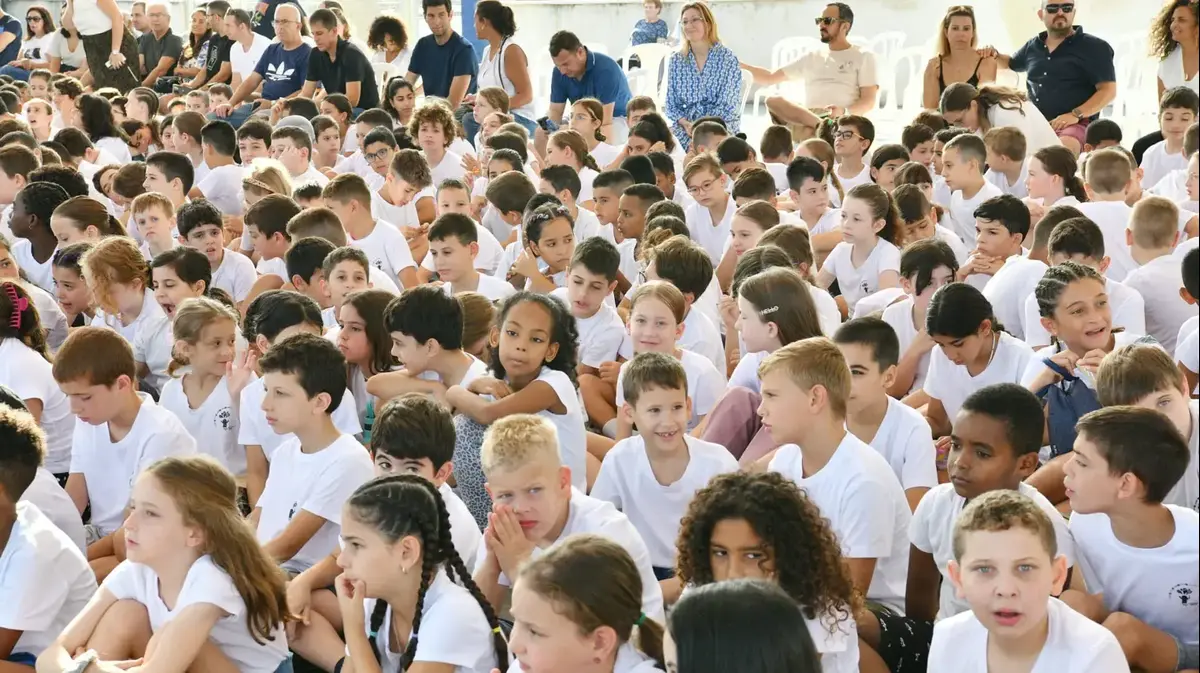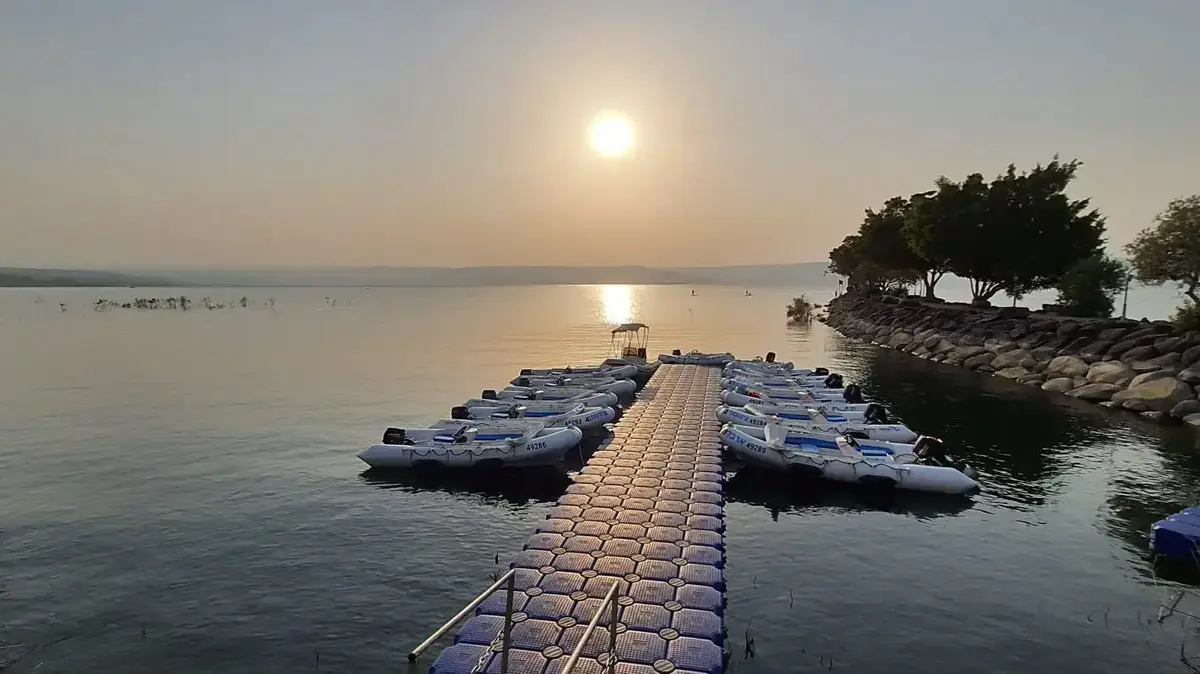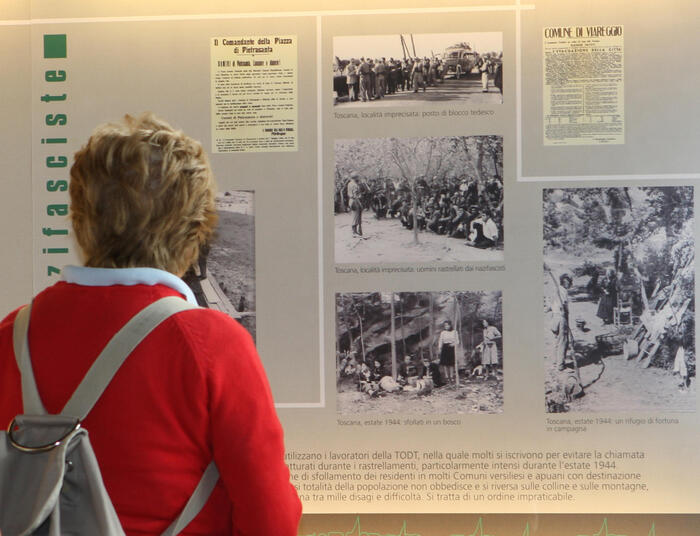news
Army and Security
The battle over the Sea of Galilee was burned as a failure.
Now the struggle is over the memory of the heroism of the warriors
While Golani fighters in the field fought fiercely for five days, the battalion commanded by Rehavam Zeevi was left behind.
70 years after the Battle of Tel Motila against the Syrians, the families of the fighters are reformulating the legacy of the battle in which 41 soldiers were killed.
"It hurts that this is what the bereaved families have carried with them for years"
Tags
Kinneret
Almagor
IDF
Golani
Eli Ashkenazi
Saturday, May 08, 2021, 12:30 p.m.
Share on Facebook
Share on WhatsApp
Share on general
Share on general
Share on Twitter
Share on Email
0 comments
Senior Likud members at a karaoke evening in Bat Yam after the transfer of the mandate ...
optical illusion
Netanyahu calls on Shaked to prevent government from torch: to take a step ...
Lapid: Israel needs unity, believes in the good intentions of ...
Lethal fights in Rio: 25 killed in police operation against ...
In the video: US President Boris Johnson talks about ...
In the video: IDF forces on their way to the homes of two of the terrorists in Tul ...
In the video: Police officers pushed one MK Tibi in a demonstration in a conversation ...
In the video: Violent riots on the Temple Mount
In the video: A company commander who fought at Tel Motila tells about the battle (Photo: Eli Ashkenazi)
A group of cyclists rode down the dirt road that stretches from Moshav Almagor towards the lookout on the estuary of the Jordan River to the Sea of Galilee and the Beit Tziida Valley. The group guide identified Zehava Pearl and asked her to tell his fellow riders about the Battle of Tel Motila, which took place exactly 70 years ago.
Not a week goes by where Pearl is not called from her home, or from her family's mango packing house, or from the seat archives. More than one visitor meets her already at the place itself, clearing the monument in memory of the 41 battle victims. Even then she is asked to tell about the same battle, or in other cases she is forced to correct incorrect explanations she hears.
"I feel within myself that I have the task of telling the story of the heroism of the soldiers who fought here and that 41 of them were killed in battle," says Pearl. "In this battle there was an image that it was a disgrace and for me it eats away at my heart. It really hurts me that this is what the bereaved families have carried with them all these years," she said.
She has been the archivist of Moshav Almagor for 20 years.
A significant part of the settlement's heritage story is the story of the same battle that took place ten years before the moshav came to the ground.
"Thanks to those warriors we are here and we see the Battle of Tel Motila as part of our heritage," she says, noting that every year the Moshav Memorial Day ceremony is held at the Tel Motila Battle Memorial.
The Battle of Tel Motila took place between May 2 and 6, 1951 in the southeast of Ramat Korazim, in the area that controls the estuary of the Jordan to the north of the Sea of Galilee.
His move and results were enshrined in the IDF's chronicles, when, alongside supreme heroism on the part of the fighters, the failure of the senior command echelon, which was plastered in real time, was discovered.
More on Walla!
"Elbaz shouted 'grenade' and it exploded": the story of heroism that inspires generations of warriors
To the full article
for further reading:
"Heavy burden has fallen on us": the letters revealing the days of bereavement of the future president and his wife
On parchment scrolls: This is what the first 12 signs of heroism in the IDF looked like
The Slick was exposed and memories began to float: the historic place that symbolizes the connection to the Land of Israel
Tired of an unbearable diet?
The successful rehab institute in Israel presents an effective, natural and healthy way to lose weight
The news in Maariv about the battle of Tel Motila after it ended, May 7, 1951 (Photo: Official website, Israel National Library)
Tel Motila and an Israeli outpost next to it called the "Figure" outpost were established on the border of the demilitarized zone west of the Jordan River, between Israel and Syria, as determined by the Armistice Committee between the two countries in 1949. Between Moshav Elifelet in the north and Kibbutz Ginosar in the south there was no settlement An Israeli outpost and the Syrians tried to take advantage of this and take over the desolate territories that were under Israeli sovereignty. In early April 1951, Syria tried to take over an al-Hama enclave that was of the same status. Now, a month later, the Syrians have stepped up their efforts to attempt to take over Tel Motila above the Sea of Galilee. At first, shepherds were sent into Israeli territory and later Syrian soldiers.
Golani soldiers were tasked with taking over the territory and exercising Israeli sovereignty over it. They were sent to the scene when their mission was to take over the "figure" outpost occupied by the Syrians and hold on to the outpost at Tel Motila.
Reservists manning Tel Motila evacuated the spot and a company under the command of Gabi Barshi entered it. Zeev Selai's company (Plesner) was sent to occupy the "figure" post.
"The command had no idea what was going on here," he told Walla! Company Commander Bershi. "I received a note from the battalion commander, Gandhi, stating - 'We will fire artillery on the spot for 20 minutes, then do a patrol and if there are bodies, bring them so that we can prove that the Syrians entered an army there.'" Barshi said that when he arrived with his soldiers at the Tel Motila post It was empty. The reservists he came to replace had already left the place.
Lt. Col. Selai-Plzner was sent to occupy the "position" post. He was a Holocaust survivor who, after World War II, at the age of 21, served in Europe in the Aliya B organization and worked in the treatment of Holocaust refugees and their immigration to Eretz Israel.
At the beginning of a hot May of 1951, at the level of the basaltic and thorny Korazim, he commanded a company whose soldiers were composed of young Holocaust survivors who came from Poland, Hungary, Russia and Romania and with them immigrants from Morocco, Algeria, Iran, Tunisia, Libya, Egypt, Afghanistan, Turkey and Greece.
"The background from which Dad came helped him understand his soldiers," says Mali, Selai's daughter.
"When we would go out for training, every soldier had a notebook and a pencil," recalled Barshi, then commander of the post at Tel Motila.
"We would order in Hebrew and then start translating the order into different languages, and each soldier would write in his notebook the meaning of the order."
Colonel Gabi Barshi, commander of the company at the Tel Motila post during the fighting (Photo: Eli Ashkenazi)
Selai, who commanded immigrants from Eastern Europe and North African and Balkan countries, used on Saturdays to serve in prayers as a "Baal Tefila" (passing in front of the ark) and as a "Baal Kora" (reading the Torah portion of the week) as a representative of compromise for his prayer-style soldiers. On Saturday, May 5, 1951, he was forced to leave the prayer center and was called to the room of Battalion Commander Aharon Avnon. The
task assigned to him was to "throw the Syrians Kibinimt from the figure post," as he wrote in his diary. For the mission. The
company descended from the north "as heavy as a furnace," as Rocky described. The Syrian force was larger than intelligence knew, digging for huge, well-armed basalt rocks. For
nearly two days, Rocky's soldiers fought stubbornly to occupy the spot. The huge ones, were properly armed and equipped with "Chateau" machine guns. For more than a day, a stubborn battle was fought on the spot.With heavy thirst the wounded mumbled a prayer in hope of salvation.
Coverage of the Battle of Tel Motila, Maariv, May 9, 1951 (Photo: Official Website, Israel National Library)
On Sunday morning, a number of Air Force planes, commanded by Yoash (Chato) Sidon, appeared from the sky. "As if by exact coordination the call 'Assault!' Was heard throughout our positions. And the spring was released ... as one man, all the fighters stormed and the assault began, "Selai described in Russian in a diary he wrote while recovering. He himself was wounded and at the end of the day the battle lost consciousness.
Battalion Commander Rehavam Zeevi and Brigadier General Golani Meir Amit sat at the command post in Villa Melchet, a few kilometers west of there, while the junior command and the fighters occupied the position and performed the task.
The price of blood was heavy - 40 fighters were killed on the spot. Another fighter, Franco Mentash, a lone soldier who immigrated from Turkey, was seriously wounded, and died after 29 years of torment.
But after the battle, Chief of Staff Yigan Yadin found it necessary to praise the battalion commander, Rehavam Zeevi, "who did not fall in love and conducted the operation until its successful conclusion."
In the press of the period the battle was concealed and the price of blood was not published.
In time the battle was burned as a failure.
There was talk of the disconnect between the senior command and the fighters in the field, the poor intelligence and the level of equipment, but there was also criticism of the level of female soldiers in the field.
Although he was far from the battlefield, Chief of Staff Yadin found it necessary to praise his work. Rehavam Zeevi (Photo: IDF Archives and the Defense System, photographers in the camp)
The battle ended with blood the difficult, ended in a military victory and realizing the value of purpose, however, the IDF and the Israeli public image has stuck failure and default.
"My father was a Holocaust survivor, but he talked about those days," says Lee rugged, daughter of Wolf Rocks "He did not speak of the battle at Tel Motila. There was silence and an atmosphere of secrecy all around. We understood that we were not talking about it, "she said.
He later wrote:
" You - the company's soldiers are new immigrants, who have just arrived in our homeland from the Diaspora, Yemenis, bearded and curly-haired wigs, Moroccans, Algerians, and Tunisians.
"Sons, brothers - and family members of our brothers, remnants of the Holocaust from Europe. You have not yet known the language of our country - Hebrew and you have not yet had time to get to know its cities and landscapes.
Seli was recognized immediately after the battle as having waged a heroic battle, but at the same time harsh criticism was leveled at the senior command, poor intelligence, communications equipment and meager storage and in addition it was agreed that the level of "human stuff" of the fighters was low.
And so a label of failure and failure was affixed to the battle.
As stated, the Chief of Staff, Yigal Yadin, found it appropriate to commend the battalion commander, Rehavam Zeevi.
Zehava Pearl, Moshav Almagor Archivist (Photo: Eli Ashkenazi)
Thirty-five years ago, two bereaved sisters whose brothers were killed in a battle set out on a rutted road, at the end of which they hoped to commemorate their brothers and friends.
Esther Gopher-Chumash, the sister of Meir Chumash and Sara Abu-Yitzhak, decided to erect a monument at the battle site where their brothers fell. Chumash, a native of Poland, immigrated to Eretz Israel with his parents when he was four years old. Before the establishment of the state, he fought in the Haganah and fell in Tel Motila when he was 19. Lavi, a native of Libya, was sent as a child with his parents to the Bergen-Belsen concentration camp. At the age of 19, he immigrated to Israel. Two years later he was killed at Tel Motila.
Moshav Almagor complied with the nurses' request and allocated space for a monument and Moshav member Danny Guy joined the effort. The two sisters operated for ten years until finally, in 1997, a monument was erected with the names of the 41 spaces stamped on them. Until then there had not even been a list of battle casualties.
But the stain of failure that clung to the battle still does not let go.
A week ago, he arrived at the place in the RPG. He is already 91 years old and yet energetic and vital. A year ago, he received a doctorate in philosophy.
A group of friends who are interested in the legacy of the battle asked him to come and tell them about Tel Motila.
"What disgrace was there? At the company level no one escaped, no one withdrew, everyone did their part, Zeev commanded the company when he was wounded and I am full of admiration for his stubbornness," Barshi tells team members, standing on the mound.
Barshi with his former soldier Zion Ziv, waving the Golani flag against the background of the monument to the battle victims (Photo: Eli Ashkenazi)
One of the listeners, Zion Ziv, a Barshi soldier at the beginning of his military career and commander of the 51st Battalion at the end of his IDF route, reinforced the words. From our battalion 43 fighters were killed and many more were killed. This battle is considered a battle of heroism, while the battle here, at Tel Motila was burned as a disgrace. It's not fair. "He took out the Golani flag, handed it over to Barshi and hugged him, both of them under the monument.
It now seems that from a historical point of view, the story of the warriors' heroism occupies an important and respected place in the legacy of the battle, especially that of the Golani Brigade. "The Battle of Tel Motila is also the story of the Golani Brigade, it is the refined essence of the Golani Brigade and if you want to understand what the Golani Brigade is - look at this battle and you will understand; there is a wonderful grouping of postcards They sounded the same, but they were ready to give their meeting on the fulfillment of the dream of generations of an independent Jewish state in the Land of Israel, "said this week at the memorial ceremony, the commander of the Golani Brigade, Colonel Barak Hiram.
"There is a model of commanders here, who led their men from the front and set an example in the most difficult moments. In this battle, the commander's ethos in the Golani Brigade was created and there are of course hundreds of fighters. The fighters are willing to cover, attack, risk their lives just because they Golani laid another stone "What really makes this battle the story of the Golani Brigade is the value that clings here in all its glory and cruelty to the value of fulfilling the task at all costs," added Col. Hiram.
The memorial service for the fallen was held to mark 70 years of the battle. Varda Pomeranz, and an information stand was installed at the monument to describe the battle, and the information stand was inaugurated at this week's memorial service.
Description of the battle in the Haaretz newspaper, May 7, 1951 (Photo: Official website, National Library of Israel)
"It's in my blood," Pearl said.
She said that her aunt, a soldier of the Jewish Brigade, was killed in the sinking of the ship "Erinfora" by the Nazis during World War II.
"When I was a child, my grandmother, who was a bereaved mother and lived with us, would never tell me to open the door of the apartment, except in case the voice on the other side said it was Moshe, her son, who had returned home," says Pearl.
"I grew up in the shadow of grief and sorrow and could not bear the thought that here too there are 41 bereaved families bearing this pain and that our society does not recognize the heroism between them," she says.
Meanwhile, Pearl finished conveying to the group of cyclists the story of the Battle of Tel Motila and added explanations of the view - from Mount Hermon in the north to Tzemach in the south.
The cyclists were about to return on their journey.
One of them left the group for a moment, went to my brush and shook his hand.
"Congratulations to you, to everyone who fought here. You are heroes," he told him.
Share on Facebook
Share on WhatsApp
Share on general
Share on general
Share on Twitter
Share on Email
0 comments









